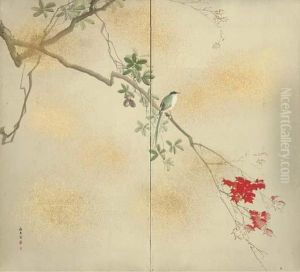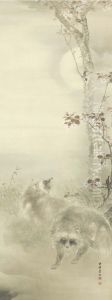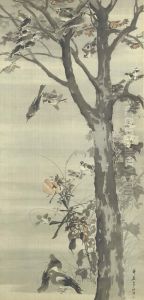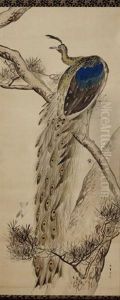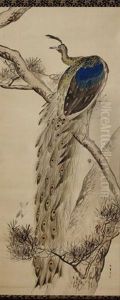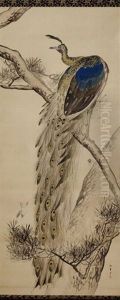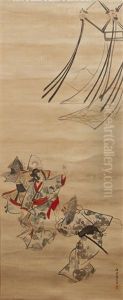Kishi Chikudo Paintings
Kishi Chikudo was a prominent Japanese painter of the late Edo and early Meiji periods. Born in 1826 in Kyoto, Japan, Chikudo was deeply ingrained in the artistic traditions of his time, contributing significantly to the world of Nanga painting (also known as Bunjin-ga), a style that emphasized scholarly and literati ideals, focusing on expressing the beauty of nature through minimalistic and often monochromatic ink paintings.
Initially, Chikudo trained under the tutelage of his father, Kishi Ganku, who was a renowned painter and founder of the Kishi school of painting. Ganku's influence on Chikudo was profound, instilling in him a deep appreciation for the spontaneity and dynamism of the natural world, which would become a hallmark of his own work. However, Chikudo was not content with mere imitation. Over time, he developed his unique style, integrating traditional Japanese techniques with influences from Chinese literati painting, which he studied through imported texts and artworks.
Throughout his career, Chikudo was highly respected for his landscapes and bird-and-flower paintings, which were celebrated for their elegant simplicity and profound sense of harmony. His works often depicted the serene beauty of Japan's countryside, capturing fleeting moments in nature with a delicate precision that belied a deeply philosophical contemplation on the human condition and our place within the natural world.
The Meiji Restoration in 1868 marked a period of significant change in Japan, as the country rapidly modernized and Western influences began permeating Japanese society. Despite these shifts, Chikudo remained committed to the traditions of Nanga painting, although his later works show an awareness of Western artistic principles such as perspective, which he subtly incorporated into his compositions.
Chikudo's contribution to Japanese art was not limited to his paintings. He was also a respected teacher, passing on his knowledge and techniques to a new generation of artists, including his son, Kishi Koitsu, who would also become a well-known painter. Through his teachings and his art, Chikudo played a crucial role in keeping the spirit of Nanga painting alive during a time of great cultural and social transformation in Japan.
Kishi Chikudo passed away in 1897, leaving behind a legacy that continues to be celebrated in Japan and around the world. His works are held in numerous prestigious collections, including the Tokyo National Museum and the Kyoto National Museum, where they continue to inspire admiration and study for their technical mastery and profound beauty.
